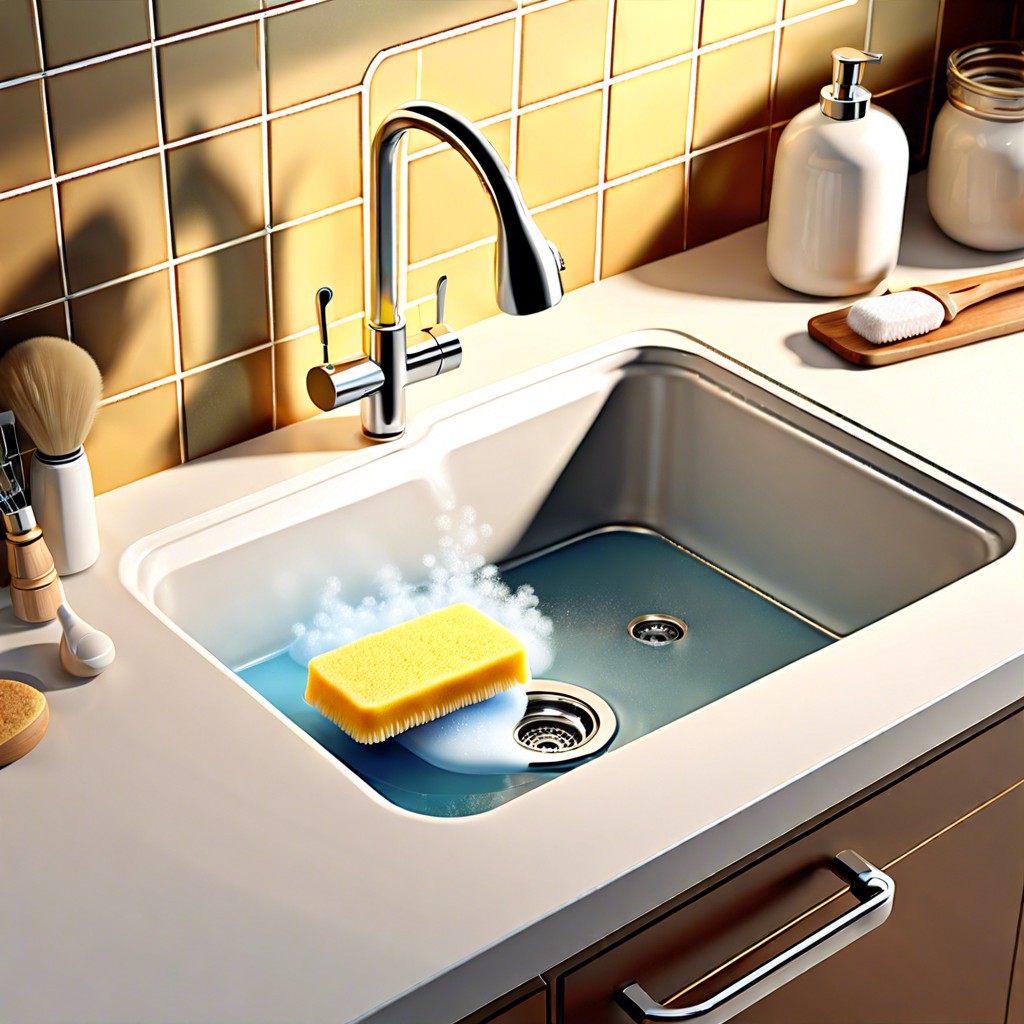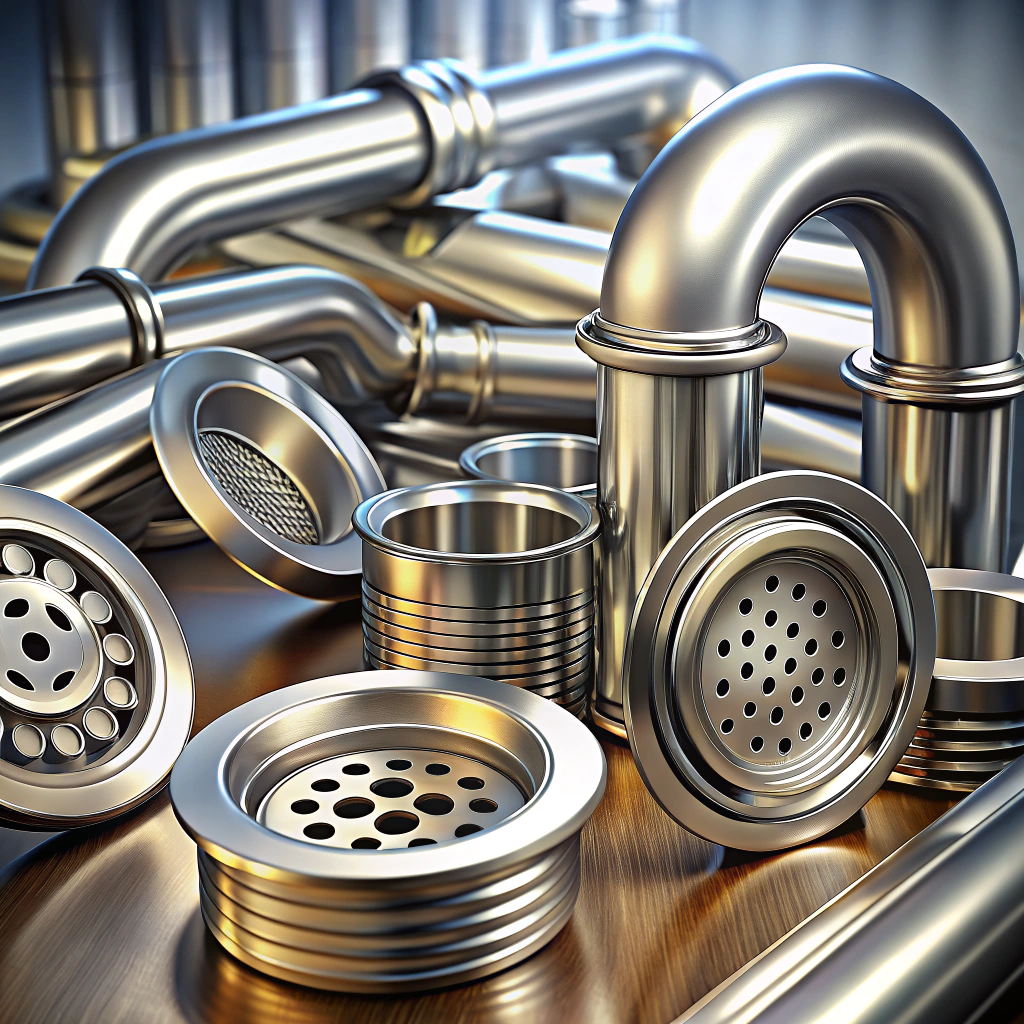Last updated on
Learn the simple steps for effectively cleaning a sink to make it sparkle like new.
Key takeaways:
- Clean your sink daily to prevent bacteria buildup.
- Use baking soda and soap to clean a stainless-steel sink.
- Scrub with dish soap to remove oily residues.
- Rinse thoroughly and dry with a lint-free cloth.
- Regular cleaning keeps your sink looking like new.
What's Inside
How Often to Clean a Kitchen Sink

Your kitchen sink sees a lot of action. Washing dishes, rinsing vegetables, or draining pasta, it’s constantly at work. So, it stands to reason that regular cleaning is a must, not an optional chore. Aim to give it a basic clean every day. Yes, daily! This prevents bacteria and grime from building up and keeps the sink shining.
Once a week, it’s wise to go a step further. Set aside some time for a deeper clean to tackle any emerging stains or lingering odors. This routine will keep your sink in tip-top condition and hygiene problems at bay.
Remember, the kitchen sink is a hub of activity. Treat it well and it’ll reward you with years of gleaming service. Plus, who doesn’t love the sight of a sparkling clean sink?
What You’ll Need
Ready to give your sink the spa treatment it deserves? Great! Before you roll up your sleeves, let’s ensure you have all the tools on hand. Think of yourself as a culinary artist, and these supplies are your palette.
Firstly, baking soda is your go-to guy for tough grime—it’s like fairy dust for stains and odors. Next, dish soap: it’s the gentle giant that can muscle out grease without flexing too hard. Now, for porcelain’s best friend, bring in hydrogen peroxide, its bubbly personality shines through on those tricky discolorations. And don’t forget the vinegar; it’s the secret sauce that leaves chrome sparkling.
You’ll also want to arm yourself with some soft cloths or sponges; they’re the trusty sidekicks for all your scrubbing adventures. For those nooks and crannies around faucets, an old toothbrush will be your mini-muscle. And lastly, keep a pair of rubber gloves within arm’s reach to protect your hands from the gritty action ahead.
Just remember, each sink material has its preferred cleaning companion, so match them wisely for a gleaming outcome!
How to Clean a Stainless-Steel Kitchen Sink With Baking Soda and Soap
Dive straight into the trenches with baking soda—this gentle abrasive is your ally. Sprinkle a generous amount onto the sink surface and attack those grime soldiers with a soft sponge. The key is to scrub in the direction of the stainless steel’s grain; think of it like petting a cat—you want to go with the fur, not against it. This will prevent scratching and give you that mirror-like shine.
Next, escort the loosened dirt down the drain with a warm water rinse. You’ll see your reflection smiling back in no time.
To finish it off, grab some dish soap and add a few drops directly onto the sponge or into a bowl of warm water. Give the sink a sudsy massage, circular motions work like a charm here, ensuring you touch every corner. This step isn’t just for sparkle—it’s like sending your sink to a spa, providing a thorough cleanse and a fresh scent.
Lastly, it’s towel time—preferably with a microfiber cloth for its magical touch. It’ll wick away water without leaving lint behind, bidding farewell to water spots and saying hello to a dazzling, clean sink. Remember, regular TLC keeps your stainless steel singing.
Scrub With Dish Soap
Dive right in by squirting a few drops of dish soap onto a non-abrasive sponge or scrubber. Why dish soap? It’s a grease-fighting champ, perfect for dealing with those oily residues left behind from last night’s dishes. Work the sponge in circular motions across the sink basin. The goal is to create a sudsy symphony that loosens grime and food particles.
Concentrate on tough spots—the base of the faucet, the drain area, and any stubborn food stains. Don’t play favorites; give every inch of your stainless-steel stage the same star treatment. The soap works as a gentle abrasive, helping to lift dirt without scratching your sink’s surface.
Remember, less is more. You don’t need a mountain of bubbles to achieve a sparkling clean. A modest squirt of soap should suffice. Once you’ve covered all areas, you’ve won half the battle. The scrubbing sets the stage for a rinse-off that’ll reveal your sink’s shine.
Rinse and Dry
Once you’ve given your sink a good scrub, it’s time to wash away the grime. Blast the residue with warm water, taking care to reach every corner and crevice. A sink sprayer becomes your best ally here—let it dance around the basin, chasing away soap suds and baking soda particles with gusto.
Don’t stop until the water runs clear and all cleaning agents are long gone. You’ll want to feel like the sink could almost sparkle on its own, even before it’s dried. Now, grab yourself a soft, lint-free cloth or a microfiber towel. These are your tools of choice for drying because they won’t scratch your sink’s surface or leave frustrating fibers behind.
Pat the surface gently but firmly, soaking up moisture to prevent water spots. This quick dry-off also hinders the return of bacteria you just worked so hard to evict. Your sink is now clean, dry, and ready for whatever you throw at it next—or preferably, gently place, because cleanliness is next to godliness, right? Keep up the shine, and your sink will continue to look like new.




